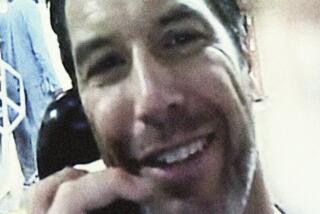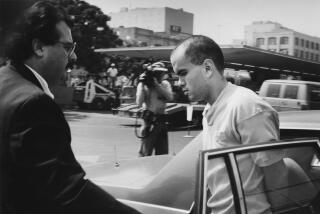A mother and her child were gunned down walking home from a supermarket. A suspect was charged, but mystery remains

The killing of a mother and daughter in Long Beach has baffled investigators. (May 15, 2017) (Sign up for our free video newsletter here http://bit.ly/2n6VKPR)
- Share via
The dramatic shift in Brandon Colbert’s personality worried his family.
The 20-year-old was withdrawing from his siblings and cousins, whom he had long considered his closest friends. He would laugh out loud for no apparent reason. He told doctors in Tulsa, Okla., that something was “taking over” his brain.
One day last year, Colbert abruptly boarded a Greyhound bus to Southern California.
Days later, police say, he walked up to a woman and her 4-year-old daughter as they were returning home from buying groceries and fatally shot them.
The killing of Carina Mancera and her daughter, Jennabel, stunned the downtown Long Beach community and baffled investigators for months.
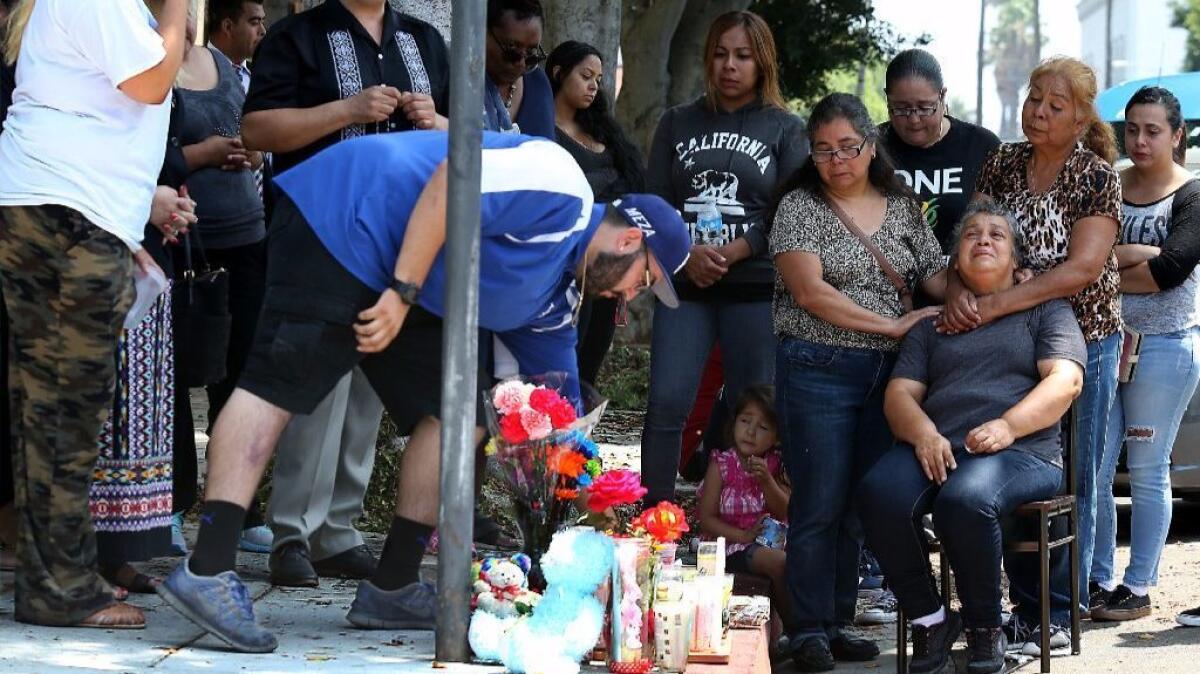
An ambush, and a mystery
Colbert was eventually linked to the crime through DNA. But authorities have not identified a motive for the slayings or said whether he knew the victims. Prosecutors describe the attack as an ambush, alleging Colbert hid before shooting the mother and daughter.
Whatever the motive, Colbert had been struggling with mental illness for some time, isolating himself from his loved ones and using a dangerous synthetic drug in the years before the shootings, according to a review of medical records and court documents and interviews with Colbert’s relatives.
Despite this history, Colbert, now 23, is acting as his own attorney in a case in which prosecutors could seek the death penalty. During recent court hearings, he has denied involvement in the shootings and raised bizarre conspiracy theories in his defense. At one point, he claimed the victims he is accused of killing are still alive. He has not raised insanity as a possible defense.
Colbert’s relatives and several defense lawyers have said he is incapable of representing himself. On Monday, a judge is expected to decide whether Colbert is mentally competent to stand trial.
The description of Colbert stalking a Long Beach street with a shotgun makes little sense to Yolanda Colbert. Her son was never violent or troubled, she said, but a 2014 diagnosis of mental illness was part of a downward spiral, one that may have sparked his move to California and turned him into a man she barely recognizes now.
“He was just talking out of his head.… We’re a very close family and he just kept saying that things were out to get him and the CIA was after him and stuff like that,” she said. “He wasn’t himself.”
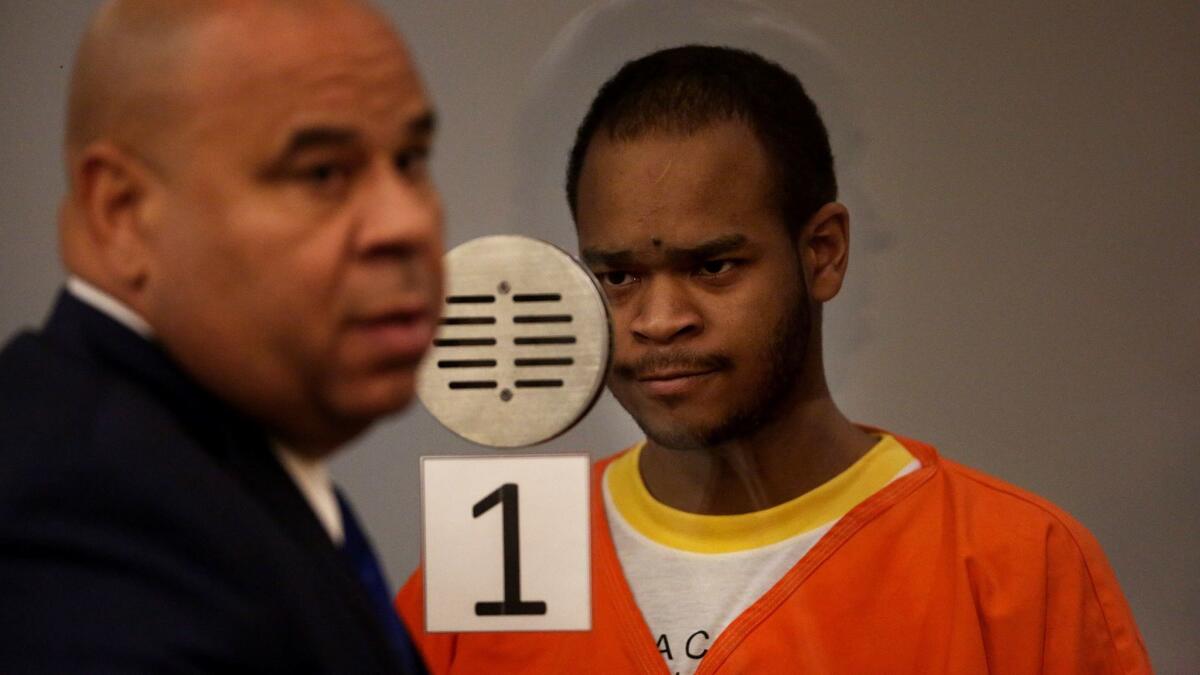
A history of mental illness
Growing up in Tulsa, Colbert was a bit of a loner, with simple pleasures and simple aims, relatives said.
He made good grades in high school, and he was on the football and wrestling teams. Far from a social butterfly, Colbert focused on family, spending most weekends with his siblings and cousins, playing video games or hanging around the house, said his younger sister, Breyan.
Colbert hoped to become a dentist, and he started working as a dental assistant after high school. He was fired in 2013 after failing a drug test for using marijuana, his mother said.
“I think that kind of broke his spirit right there,” Yolanda Colbert said.
Months later, Colbert grew withdrawn and paranoid, expressing concern that something was “taking over” his brain, according to his family and medical records reviewed by The Times. In October 2014, he spent two weeks at a mental health facility in Tulsa, where he was diagnosed with schizophreniform disorder, meaning he was presenting symptoms of schizophrenia but not for the six-month period necessary for a formal diagnosis, records show.
He admitted to near daily use of marijuana and some use of “K2,” also known as “spice,” a synthetic form of marijuana that can lead to psychotic episodes and violent outbursts. The drug can also exacerbate underlying symptoms of mental illness, said Michael Levine, the chief of the division of medical toxicology at USC.
It is unclear how often Colbert was using spice, but doctors in Oklahoma feared he had downplayed how frequently he was smoking it, records show. Colbert was released after 13 days at the facility, and doctors said he was not having suicidal or homicidal thoughts at the time, according to a medical report.
Medication prescribed to Colbert kept the symptoms at bay for a while, though his sister said he struggled to accept his diagnosis. He did not like taking the medication, and was unable to find a new job, relatives said.
Colbert stopped taking the medication early in 2016, his mother said. The symptoms soon returned.
Yolanda Colbert said she sought a court order to have her son resume treatment. Colbert was not found to be a danger to himself and was allowed to remain out of treatment, she said, and the decision to try to force him into a mental health facility opened up a rift between mother and son.
“He was mad at me so he wasn’t talking to me,” she said. “He was basically isolating himself. Just distancing himself from his family.”
Colbert boarded a California-bound bus in Tulsa on Aug. 3, 2016, and arrived in Los Angeles the next day, police said. His mother assumed her son was traveling west to look for work. Breyan said her brother had always wanted to go to California, but didn’t give a reason for this specific trip. He didn’t know anyone in the state, she said.
A trip to the grocery store ends in gunshots
On Aug. 6, Carina Mancera, 26, was returning to her Long Beach home just north of downtown after a trip to the grocery store with her 4-year-old daughter, Jennabel Anaya, and her longtime boyfriend, Luis Anaya.
As they walked from their car, a man wearing “all black” stepped out from behind a concrete sign and opened fire, according to testimony Anaya gave at a March hearing in Colbert’s case.
As his girlfriend and daughter fell to the street, Anaya said, he briefly locked eyes with the gunman.
“When I tried to look at him, he shot at me,” a tearful Anaya told reporters the morning after the killings.
The final shot missed, and the gunman fled, Anaya said. Seconds later, Anaya raced toward his girlfriend and their daughter, stumbling into a horrific scene. Mancera died almost instantly, court records show. Jennabel lay near her mother, bleeding and screaming. One of the girl’s arms had been “blown off,” Anaya testified. He put the child on the phone with her grandmother, desperate to comfort her, but Jennabel died a short time later at a hospital.
The shooting left investigators and those close to the victims scratching their heads. Anaya and Mancera had been dating for five years and were well-liked in the neighborhood, friends said. Police dismissed any suggestion that the attack was linked to drug or gang activity. A Long Beach homicide sergeant described the case as a “whodunit.”
Two months later, police released surveillance video of a man lurking in the area and riding a Blue Line train with luggage on the night of the shooting. They described him as a “person of interest,” but didn’t know who he was or whether he was still in California.
In some of the videos, a long narrow object could be seen protruding from the man’s bags. Investigators now believe it was the nose of the murder weapon: a shotgun.
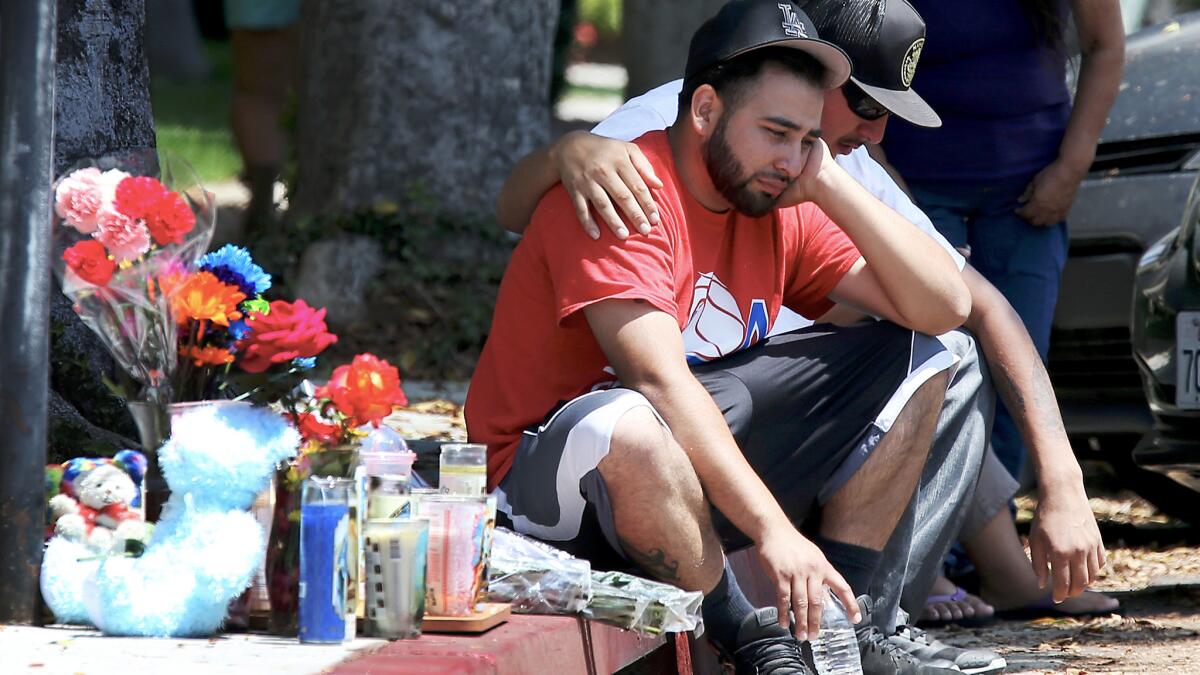
Detectives make the link
By this point, Colbert was in county jail. Los Angeles police had arrested him on suspicion of car theft on Aug. 27, though those charges were later dropped, court records show.
Yolanda Colbert said she traveled to Los Angeles to visit her son after he was arrested, and found he had been placed on suicide watch.
“I don’t want you to see him like this,” a public defender told her.
The defense lawyer raised doubts as to Colbert’s mental health in the car theft case, but he was found competent to stand trial in November, records show.
Days later, he was charged with two counts of murder in the Long Beach shootings. DNA found on a shotgun shell at the crime scene linked Colbert to the killings, according to court records.
I don’t believe these people are actually dead because I said this is like a Hollywood movie and I’m not an actor and I don’t want to play this game.”
— Brandon Colbert, who is being tried in the killing of a mother and daughter
A ‘gray-area defendant’
As his case moves toward trial, Colbert’s mental health has become a central issue.
A lawyer hired by his family pleaded with the court to block Colbert from acting as his own attorney. Last month, prosecutors filed a motion asking a judge to determine whether or not Colbert is capable of representing himself.
In the motion, prosecutors referred to Colbert as a “gray-area defendant,” who might be competent to stand trial, but not capable of legally defending himself. A judge in April ordered Colbert to undergo a mental health evaluation.
In recent months, Colbert has appeared confused and unnerved during a series of pre-trial hearings. At several points, he has asked judges for advice on how to proceed, over admonishments that the court cannot aid in his defense.
During his preliminary hearing in March, Colbert did not call any witnesses, and entered only one item into evidence: the bus ticket proving he traveled from Oklahoma to California days before the shooting. He also countered the prosecution’s claim that he brought the murder weapon from Oklahoma, claiming he pawned a shotgun back home to obtain bus fare to California.
Mostly, he has trafficked in conspiracy theories. Colbert has repeatedly insisted he is being framed. He has made several references to the 1997 crime drama “Gang Related.” The movie, starring James Belushi and Tupac Shakur, centers on a pair of corrupt police officers who frame a homeless man for the murder of an undercover federal agent.
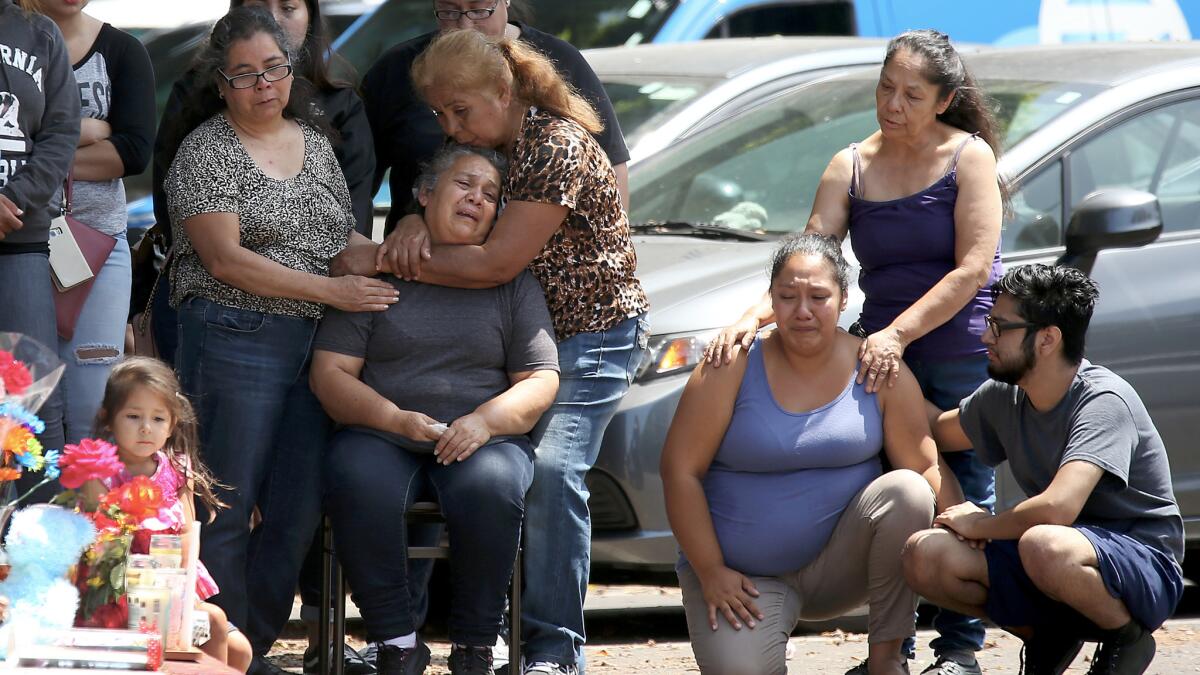
A troubling defense
During the March hearing, Colbert made his boldest and strangest claim: that the mother and daughter he is accused of killing are still alive.
“I don’t believe these people are actually dead because I said this is like a Hollywood movie and I’m not an actor and I don’t want to play this game,” he said, according to a transcript of the hearing.
Jim Preis, an attorney specializing in mental health law who now serves as executive director at Mental Health Advocacy Services in Los Angeles, said Colbert’s prior diagnosis would not automatically preclude him from being found competent to stand trial. A defendant’s ability to stand trial can change over time, he said. A judge would need to determine that Colbert understands what is going on in the courtroom and is capable of assisting in his own defense in order to determine he is fit to stand trial.
If Colbert is allowed to stand trial, that does not necessarily mean he is competent to represent himself, Preis said. A separate hearing could be ordered to determine if Colbert can act as his own attorney, Preis said, adding that a judge would need to believe Colbert is capable of “organizing and presenting his own defense.”
In March, Colbert filed a rambling, handwritten note asking for the case to be dismissed.
“I have substantial evidence of a theory of a setup, of staged circumstances,” he wrote.
The note provided no further explanation.
Follow @JamesQueallyLAT for crime and police news in California.
ALSO
Former Angels player Doug DeCinces found guilty of insider trading
Ex-L.A. County Sheriff Lee Baca sentenced to three years in prison in jail corruption scandal
Beaumont councilman indicted on perjury and bribery charges, Riverside County D.A. says
More to Read
Sign up for Essential California
The most important California stories and recommendations in your inbox every morning.
You may occasionally receive promotional content from the Los Angeles Times.
